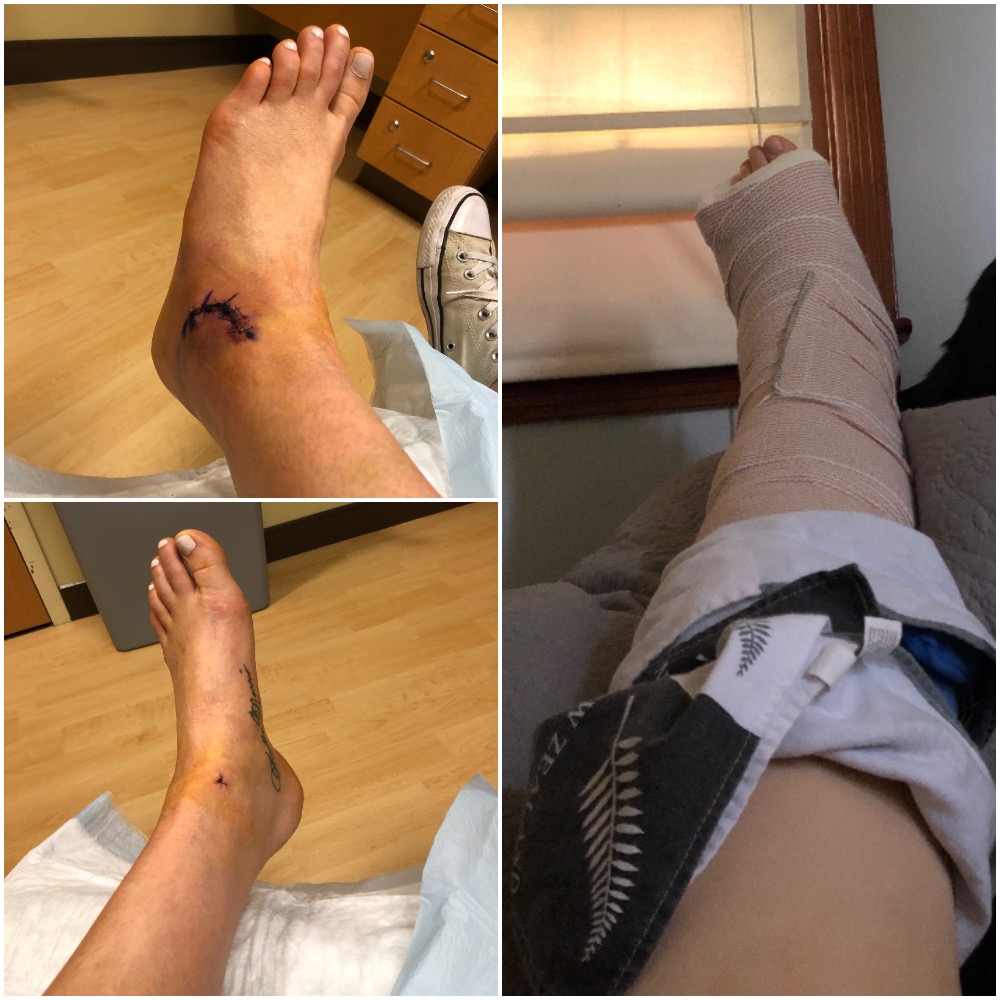
1. Individuals who opt for a modified Broström Procedure are usually those with a long history of ankle injuries. How many ankle sprains did you have?
I can remember four or five big ones, but my first ankle sprain was during volleyball. I jumped and landed, rolling my ankle pretty bad.
2. A number of studies have found that those who forgo balance training after an ankle sprain are at an increased risk of another injury. After your sprains, did you complete physical therapy?
No, my first one was pretty bad, which left me hobbling off the court. I had no interest seeking medical attention, so I didn’t follow up with a doctor. And since then, my ankle would just roll, again and again, even during simple tasks such as walking. By the time I decided to give physical therapy a try, my ligaments were gone.
3. Surgery is commonly reserved for those experiencing persistent ankle instability, even after completing six months of physical therapy. What was the deciding factor for you?
It got to a point when I would roll my ankle walking. And this was even after I completed strength and balance exercises. Now, as a pediatric physical therapist, my job requires me to be up and down, so I didn’t want to risk injuring my ankle on the job.
4. To assess the strength of your ligament and ankle structure, it is common for doctors to perform stress tests and imaging. What imaging did you have?
My podiatrist ordered X-rays, and they found an avulsion fracture of my fibula. I also completed an MRI so there weren’t any surprises during surgery. The combination of imaging and the clinical assessment (talar tilt and anterior drawer), my doctor determined my ligaments were gone. .
5. In preparation for surgery, what was the discussion like with your doctor?
He informed me that surgery would help to reestablish my stability. He also advised that it would be a three to four month recovery, with a 90% success rate.
6. The amount of instability is a deciding factor when determining one’s surgical procedure. What type of procedure did your doctor complete?
Due to the significant amount of instability, my doctor performed a modified Broström Procedure along my anterior talofibular (ATFL) and calcaneofibular (CFL), adding an internal brace to my ATFL for more support. Additionally, he completed a debridement to clean up the joint.
7. After surgery, how much weight were you allowed to put on the leg?
For two weeks, I had a splint and wasn’t allowed to put any pressure on the leg, as my doctor tends to be a little conservative. But by week three, I was weight-bearing as tolerated in a CAM boot.
8. Now, there is a fine line of stress your ligament must undergo – enough to promote healing but not too much that will cause damage. First weeks after surgery, what motions were considered safe to complete?
Initially, I didn’t do anything with the ankle, completing mostly general leg and core strengthening. By four to six weeks, I transitioned to a small brace and began gentle ankle mobility exercises in physical therapy.
9. The common time frame to start dynamic activities, such as running, is three to four months. When were you allowed to resume recreational activities?
By three months, I was completing low impact activity, like light jogging and hopping. My physical therapist advanced my exercises based on my progression.
10. What factors did your physical therapist assess to determine when it was safe to discharge you from PT?
My PT checked my ankle mobility and strength, ability to balance on one leg (eyes open and closed), and assessed my running mechanics.
11. What was the most challenging aspect of physical therapy?
The most challenging and frustrating part was the balance. And even today, I can feel the subtle difference between limbs. So, I am still working on my balance exercises using a wobble board.
12. Being a year out since surgery, how is your ankle feeling? Any joint stiffness?
My ankle feels good, but occasionally, I have apprehension walking on uneven surfaces. Regarding to joint stiffness, I’m lacking a little bit of ankle motion but probably my fault, as I didn’t continue to push myself after being discharged from physical therapy.
13. Looking back, what would you do differently to manage your previous ankle sprains?
I wish my parents made me go to the doctor during high school. I think if I addressed my initial ankle sprain and allowed the ligaments to heal, I may have not needed surgery. And obviously, completing therapy after those sprains would have been beneficial.
14. What insights can you provide to those having this surgery?
Get a knee scooter to get around and do your therapy the right way the first time around. The way I think about it is…I spent so much money on the surgery, so why not get my ankle back to where I want it to be. With nearly normal ankle motion and good strength back in the proper time frame, I am glad I spent the money to do that.